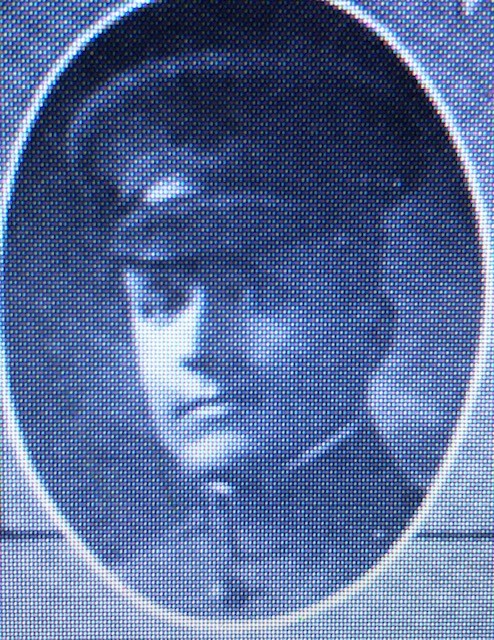
It was a day of youth.
21-year old Hugh Coughlin is with his parents at their home in Escanaba, Michigan. His mother touches his forehead. He’s hot with fever. His father hears him cough. A deep and rattling thickness. Mom and Dad together exchange a worried look at seeing their son. He suffers in pain. Of course, they’re thrilled to have him home; the idea of their young son, the Lieutenant in the Artillery, possibly going into battle in France was a nightmare to them. Better here than there. But the sickness that caused him to be sent home to recover made his arrival in Escanaba a bittersweet thing. So what will tomorrow bring?
Another young man in the US military reports to the hospital at Fort Jackson, South Carolina. He’s alone, without family nearby. He’s ordered straight to bed. He stretches out on the thin mattress covering a small metal bed, one of hundreds crammed into the medical facility at the fort. Like Coughlin a thousand miles away, he’s got influenza. He pulls his blanket to his chin.
We will see this young man again.
So it goes all across the nation where influenza is the new controlling force of life. The shocking thing about the illness, apart from its bewildering speed of symptoms-to-death, is that young people are under attack from the condition. They’re supposed to be fit and well and yet influenza is overwhelming them. There’s no way to make sense of it.
The communities with first cases today continue to stack up—Boulder, Colorado; Evansville, Indiana; Dover, New Hampshire. A few of many.
Philadelphia has a strange atmosphere today. Influenza cases are numbered by hundreds, then thousands. One at a time, a man, a woman, a boy, a girl. Some medical and housing officials are worried about the city’s overcrowded population. The city is stuffed with people working war-related jobs. But a newspaper quotes “naval authorities” as saying they “believe today they have the epidemic well in hand, and will be able to stamp it out completely within two weeks.” Their confidence is buoyed by today’s announcement that Dr. Paul Lewis of the prestigious Phipps Institute has discovered the exact germ causing the sickness. The way to treat it, to “stamp it out” as the naval officials put it, could not be far behind.
And finally, on this day of youth, Prince Erik of Sweden, 29 years old, dies of influenza.
A thought for you on Day 13, March 25, 2020, thirteen days after President Trump declares Covid-19 a national emergency—one unimaginable or incomprehensible thing is so hard to cope with. Feels next to impossible, really. But two? It’s a different universe. In 1918 the one-two sequence was influenza’s speed from illness to death and its spread to young people. For me, that rather resembles the current situation of the scientific and medical facts of Covid-19 and the economic and social facts of our lives realistically. So much of what is happening to all of us seems inexplicable. Perhaps we can gain some footing on a patch of solid ground when we realize that a key source of our confusion and bewilderment can be traced to the presence of two unimaginable and incomprehensible things. Don’t give confusion more influence than it already has. Confusion has a source and often that source can be this one-two sequence.
(note to reader—I invite you to subscribe to this series/blog. The purpose of my posting in this series is the purpose of my enterprise at Historical Solutions—to explore the past in a new way that brings new and different value to you, both in the present (this minute) and on the edge of the future (what’s ahead or forward of this minute). The past is everything before now, the totality of all time before the present; history is a set of very small slices of the past that, for a particular reason, have been remembered. If you wish to contact me privately, please do not hesitate to text or call 317-407-3687)







